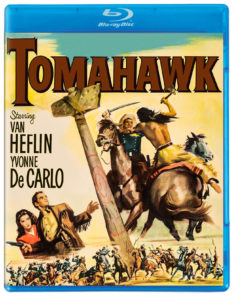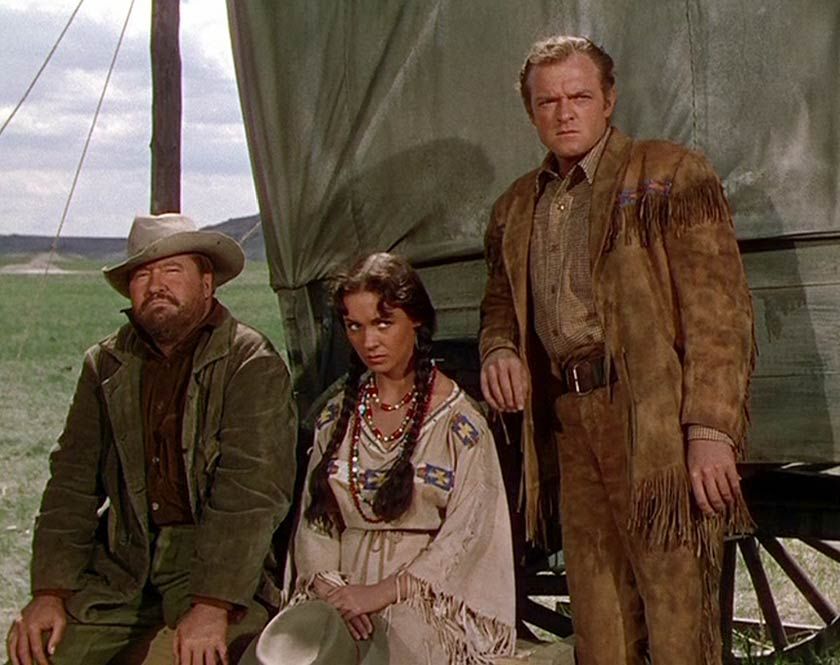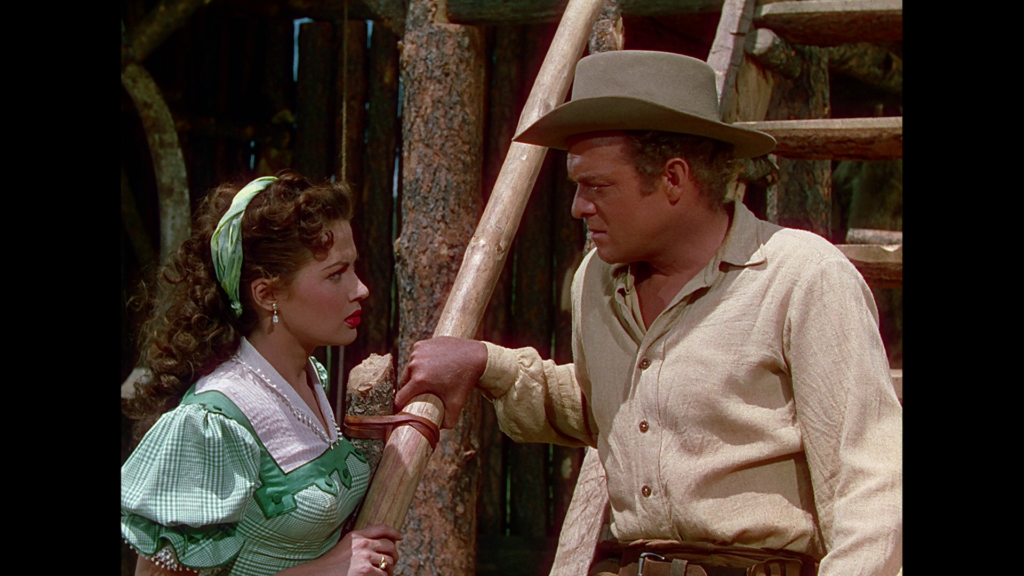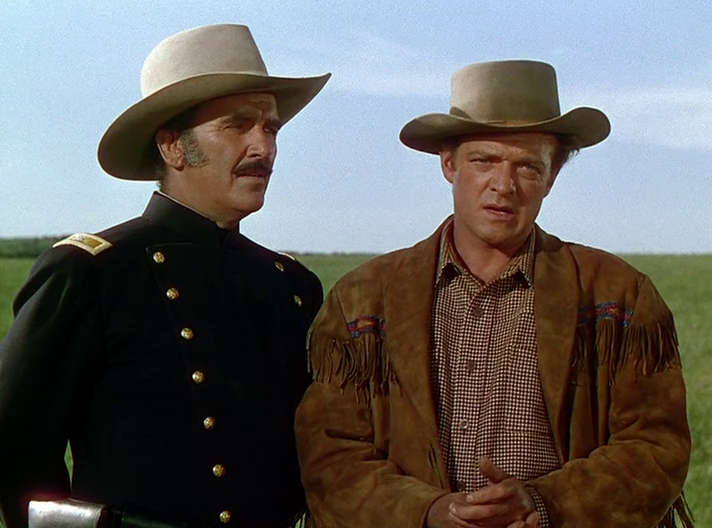Van Heflin Blazes a Trail for Revisionist Westerns in U.S. Cavalry Western
DIRECTED BY GEORGE SHERMAN/1951
BLU-RAY STREET DATE: MARCH 28, 2023/KL STUDIO CLASSICS

Upfront, it’s important to clarify that the only literal tomahawk in Tomahawk is the freshly painted Technicolor-popping one that strikes a tree in close-up as the title graphic appears. Other than that, this 1951 George Sherman Western (the director also helmed 1954’s Border River, also released to Blu-ray by KL Studio Classics) is all bullets, bows and arrows. That is, when its historically based frontier tensions of the U.S. Cavalry versus the vast First Nation’s Sioux tribe come to a boil.
We open with an exposition-heavy depiction of the Fort Laramie Treaty conference (here timestamped as 1866 but actually held in 1868) between the two factions, staged in a desolate field with the warriors of both sides mounted on horseback, silently staring each other down like linebackers just waiting for the slightest negotiation to go sideways. And of course, it essentially does- though mass bloodshed is averted thanks in part to the intercession of hardened fur trader Jim Bridger (Van Heflin).
Bridger, as depicted here, is a Caucasian salt of the Earth man of the land with one foot earnestly in Native American culture. This much appears to be accurate to the historical Jim Bridger, who knew the land better than any white person, and commanded a pretty penny for his scouting skills. In the film, the Sioux call him “Tacanipiluta”, which means “Tomahawk”. That makes Bridger the title character. Tomahawk is, above all, a veneration of Bridger, depicted as a U.S. citizen loyal to his flag but perhaps more-so looking out for the Sioux. But, any “white savior” posturing aside, it’s important to state that by early 1950’s standards of films empathizing with Indians, it is a surprisingly profound and progressive Hollywood Western. (For the record, history does not place Bridger at the 1868 Fort Laramie Treaty conference, as he was in the early stages of failing health and settled in Missouri that year). One could even argue that Tomahawk’s resolution shoots down its own “white savior” inclinations.

At the treaty conference, the less than noble intentions of the Cavalry, and by quick extension, the U.S. government, are quickly called out by Chief Red Cloud (played by John War Eagle, one of many authentic Native Americans onscreen). Bridger translates: “The white mans’ promises are written in water”, meaning, the Cavalry spokesmen and his cohorts are “a pack of liars.” Red Cloud isn’t wrong, particularly when it comes to the bloodthirsty racist doings of 1st. Lt. Rob Dancy (Alex Nicol). Dancy is a real piece of work, his casually treaty-violating murderous actions taking the U.S.’s dismissive dehumanizing view of the First Nations residents to its natural conclusion.
Caught up in the middle of all of this is Dancy’s flame, Julie Madden (Yvonne De Carlo), a traveling performer who finds herself locked down at the fort while her wagon master recovers from having an arrow removed from his chest. While the ostensible heroine of the story, Julie’s own default belittling attitude towards Bridger’s travel companion, Monahseetah (Susan Cabot), is flagged prominently and reprimanded. Some characters grow and change in this regard, others do not. In the meantime, Tomahawk plays out as a particularly good adventure, and a solid precursor to the wave of “revisionist Westerns” that would follow a decade or so later, and onward.

On the KL Studio Classics’ newly recorded audio commentary, film critic and author Lee Gambin is joined by actress and film historian Rutanya Alda to discuss the film. It’s an entirely complementary track in regard to film, pointing out how Tomahawk stands among a very small subset of its contemporary Westerns in being a pro-Indian story. The steely and authoritative Van Heflin is commended for learning and speaking in actual Sioux language for the part. Rock Hudson is pointed out in the handful of moments he occupies in the movie as Cpl. Burt Hanna. The Blu-ray’s visual characteristics are good in terms of color but shaky when it comes to wear and tear. (A minor issue, but noticeable here and there).
George Sherman doesn’t tiptoe around the pain and unpleasantries of the cinematic Old West. The splattered, caked-on mud is thick, and the frequently spilled blood is viably red. In its conflation of Sioux/Cavalry history and Jim Bridger (“Pioneer, hunter, scout, American!”), Tomahawk emerges as a historical relic that was always on the right side of said history.


